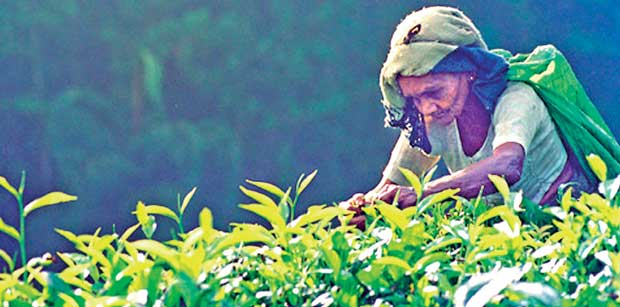
"Plantation Industries Minister Lakshman Kiriella reluctantly told MirrorBusiness that only Rs. 4 billion had in fact been allocated for tea, and Rs. 3 billion for rubber"
By Chandeepa Wettasinghe
Recent information has brought to question the effectiveness of the subsidies announced in the new government’s interim budget for tea and rubber smallholders.
The interim budget in January proposed to allocate Rs. 5 billion to purchase tea leaves at Rs.80 per kilogramme, and Rs. 3.6 billion to purchase rubber at Rs.350 per kilogramme.
The tea subsidy is being implemented by giving factory owners funds to pay the growers up front, while the rubber subsidy requires growers to sell their produce to customers at lower prices and travel to Colombo and produce their receipt to reclaim the difference.
However, sources within the tea smallholders said that while some factories in a few regions have received the funds to guarantee prices, most growers are still selling their tea leaves for around Rs.68, the lowest since 2011.
Meanwhile, reliable sources within the rubber industry said that most rubber smallholders would not even think of travelling to Colombo, since their operations are too small, and the travel costs would go a long way to offsetting the subsidy. Recent reports also said that if the subsidy is to reach every smallholder, the government would have to allocate Rs.16.4 billion a year.
However, Mirror Business recently reported that Rs.650 million of the rubber funds had already been exhausted, and that the Rubber Development Department was confident of the funds being sufficient to last till December.
It appears that the policy was implemented without analyzing the complete picture.
The week following the interim budget, the department said that the Rs.350 guaranteed price would only be given for RSS1 and RSS2 grade rubber, of which smallholders only account for 1 percent of the national supply.
The RSS4 and RSS5 grades, which account for almost all production of the smallholders, were given a price of Rs.300 per kilo.
The seriousness of the scheme is also questioned, as Plantation Industries Minister Lakshman Kiriella reluctantly told Mirror Business that only Rs.4 billion had in fact been allocated for tea, and Rs.3 billion for rubber.
Since Prime Minister Ranil Wickremasinghe recently said that the Treasury had to squeeze money from elsewhere to find Rs.1 billion for the Free Wi-Fi programme—one which the Information Communication Technology Agency earlier said would cost no public funds—the subsidy could have fallen victim to such projects.
Sources said that the subsidy is a plan of the new regime to win votes in the rubber and tea growing regions; similar to the rubber subsidy given by former President Mahinda Rajapaksa which was highly successful and saw him dominating the votes in those regions. Meanwhile, the Regional Plantation Companies which account for most of the highest quality rubber, just over 30 percent of the tea production and over half of the plantations workforce have been collectively losing over Rs.2 billion a year, and are facing even greater losses, given their obligation to periodically increase the wages of their workers.
